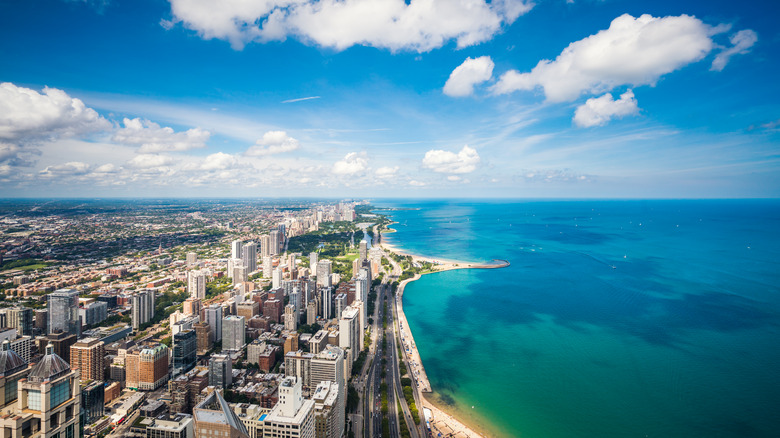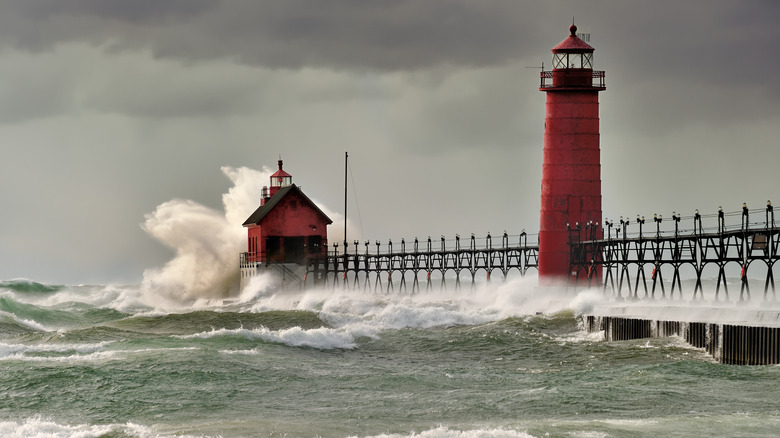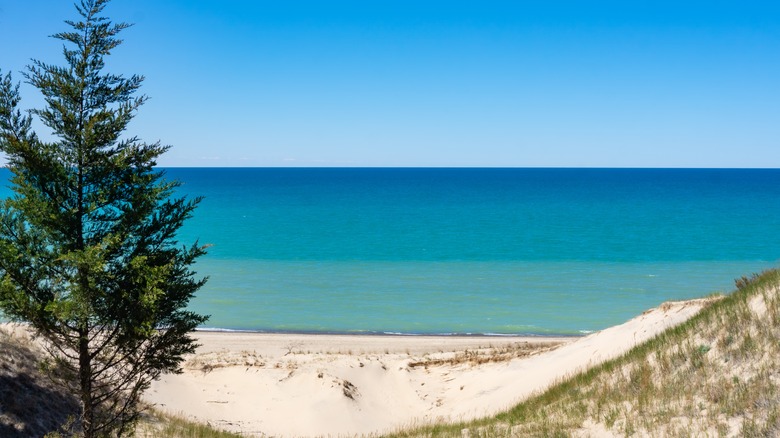Why You Need To Be Extra Alert When Swimming In The Roughest Of The Great Lakes
Swimming in the Great Lakes is a staple activity of many a mid-Western summer. With their vast stretches of crystal-clear water, these majestic lakes have become popular destinations for water enthusiasts. However, among the five Great Lakes, Lake Michigan stands out as one of the most notorious for its unpredictable and treacherous conditions.
Just how dangerous is Lake Michigan? In 2022, The Great Lakes Commission recorded 108 drownings in the Great Lakes, with 45 happening in Lake Michigan. That means Lake Michigan saw over 40% of drownings in the Great Lakes. Despite this, the lake attracts swimmers throughout the summer. Chicagoans, in particular, flock to the sandy beaches along its shores and cool off in its refreshing waters when temperatures in the Windy City heat up.
And these crowds somewhat account for the high percentage of drownings. Lake Michigan has two large cities — Chicago and Milwaukee — on its shore and thus attracts large numbers of people — more people equals more accidents. However, Lake Erie has a similar number of people in close proximity, and Lake Ontario isn't far behind. So what's going on at Lake Michigan?
The dangers of Lake Michigan
What's going on is that Lake Michigan is rough. It is the second-largest of the Great Lakes by volume and boasts a surface area of over 22,000 square miles. Standing on its shore, you feel like you're looking at a sea rather than a lake. Lake Michigan's immense size, coupled with its shape and geographical position, create a unique set of conditions that can result in rapidly changing, rough waters.
Large waves can build easily thanks to the usual wind direction across the lake — West to East — and while the waves can be dangerous in and of themselves, they can also cause unsafe rip currents. Rip currents form when water brought toward the beach by large waves rushes away from the shore. These currents can pull swimmers far from the beach and are hard to escape. Longshore currents are also present in Lake Michigan and can move swimmers parallel to the beach, possibly into objects in the water like piers. Speaking of piers, it's best to avoid swimming near any structure in the water as the aptly named structural currents can occur nearby, pushing swimmers away from the shore.
Safety tips for swimmers
That leads us to some safety tips for swimming in Lake Michigan. First, what happens if you get caught in one of those dangerous currents? If a rip current pulls you out, try to relax (yes, we know it'll be hard), swim parallel to the shoreline until free from its pull, and then swim back to shore. Don't try to swim against the current to get back to the beach; it's stronger than you are. When caught in a longshore current, do the opposite: swim towards the beach. Avoid jumping off piers and other structures to avoid being swept off by a structural current. And, finally, if you're ever swept off a sandbar by a current in Lake Michigan, do not try to get back on the sandbar; swim towards the shore instead.
There are other common-sense tips to follow when swimming in Lake Michigan. Always check the weather conditions before heading out for a swim, as sudden storms can create dangerous conditions on the lake. Also, swim with someone else in a populated area. Most Lake Michigan beaches don't have lifeguards, but having someone nearby who can call for help is invaluable.


